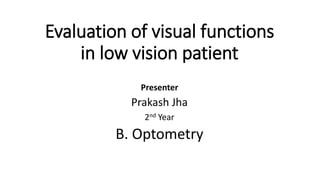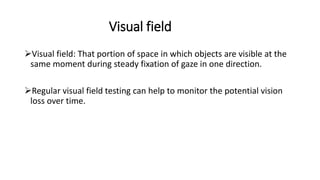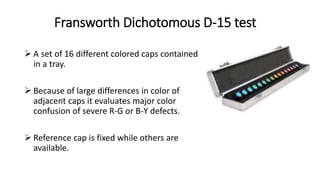Evaluation of visual functions in low vision patients involves assessing visual acuity, visual fields, color vision, contrast sensitivity, and glare tolerance. Visual acuity is measured using charts with logarithmically progressing optotypes at both distance and near. Other tests include Ishihara plates for color vision, Pelli-Robson chart for contrast sensitivity, and brightness acuity testers for glare sensitivity. Together these evaluations help identify the extent and nature of vision loss to guide low vision rehabilitation.



























































